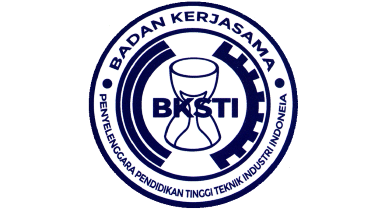Implementasi Green Supply Chain Management untuk Pasokan Telur Ayam Menggunakan Metode Fuzzy AHP
DOI:
https://doi.org/10.30737/jatiunik.v6i2.3113Keywords:
Green Supply Chain, Egg Chicken, fuzzy AHPAbstract
The need for chicken eggs is inseparable from the supply chain network. Green aspects in fulfilling supply chain networks have an impact on the environment such as market cleanliness and egg quality. The current condition of Kemang Market in supply chain management has not led to environmental aspects. The purpose of this study is to identify priority criteria that can be applied to green supply chain management activities in Kemang Market, Bogor Regency. The method used is Fuzzy Analytical Hierarchy Process (AHP) to determine the main criteria in applying green supply chain management practices to chicken eggs in Kemang Market, Bogor Regency. The results showed that the main criteria used in the GSCM practice of chicken eggs are top management support in implementing supply chain operational activities, namely through clean market environment programs and monitoring systems related to egg arrival and dispensing systems in the market.
References
Z. Hong and X. Guo, Green product supply chain contracts considering environmental responsibilities, vol. 83. Elsevier Ltd, 2019.
S. Min, Z. G. Zacharia, and C. D. Smith, “Defining Supply Chain Management: In the Past, Present, and Future,” J. Bus. Logist., vol. 40, no. 1, pp. 44–55, 2019, doi: 10.1111/jbl.12201.
E. N. Hayati, “Supply Chain Management (SCM) Dan Logistic Management,” J. Din. Tek., vol. 8, no. 1, pp. 25–34, 2014.
J. Luo, C. Ji, C. Qiu, and F. Jia, “Agri-food supply chain management: Bibliometric and content analyses,” Sustain., vol. 10, no. 5, 2018, doi: 10.3390/su10051573.
S. H. Santosa, A. P. Hidayat, and R. Siskandar, “Safea application design on determining the optimal order quantity of chicken eggs based on fuzzy logic,” IAES Int. J. Artif. Intell., vol. 10, no. 4, pp. 858–871, 2021, doi: 10.11591/ijai.v10.i4.pp858-871.
H. C. Wahyuni and W. Sumarmi, “Pengukuran Risiko Keamanan Pangan Pada Sistem Rantai Pasok Ikan Segar,” J@ti Undip J. Tek. Ind., vol. 13, no. 1, p. 37, 2018, doi: 10.14710/jati.13.1.37-44.
S. Yang, P. Ding, G. Wang, and X. Wu, “Green investment in a supply chain based on price and quality competition,” Soft Comput., vol. 24, no. 4, pp. 2589–2608, 2020, doi: 10.1007/s00500-019-03777-y.
X. Li, D. Liu, Z. Zhang, T. Cheng, L. Liu, and J. Yuan, “The impact of internal and external green supply chain management activities on performance improvement: evidence from the automobile industry,” Heliyon, vol. 8, no. 11, p. e11486, 2022, doi: 10.1016/j.heliyon.2022.e11486.
K. Rahmani and M. Yavari, “Pricing policies for a dual-channel green supply chain under demand disruptions,” Comput. Ind. Eng., vol. 127, no. October, pp. 493–510, 2019, doi: 10.1016/j.cie.2018.10.039.
A. B. Abdallah and W. S. Al-Ghwayeen, “Green supply chain management and business performance,” Bus. Process Manag. J., vol. 26, no. 2, pp. 489–512, 2019, doi: 10.1108/bpmj-03-2018-0091.
H. Song, H. Chu, H. Yue, and Y. Chen, “Green supply chain coordination with substitutable products under cost sharing contract,” Procedia Comput. Sci., vol. 199, pp. 1112–1119, 2021, doi: 10.1016/j.procs.2022.01.141.
D. Akhmatova, “ScienceDirect ScienceDirect Green SCM and TQM for reducing environmental impacts and Green SCM and TQM for reducing environmental impacts and enhancing performance in the aviation spares supply chain enhancing performance in the aviation spares supply cha,” Transp. Res. Procedia, vol. 63, pp. 1505–1511, 2022, doi: 10.1016/j.trpro.2022.06.162.
Q. Zhang, B. Gao, and A. Luqman, “Linking green supply chain management practices with competitiveness during covid 19: The role of big data analytics,” Technol. Soc., vol. 70, no. June, p. 102021, 2022, doi: 10.1016/j.techsoc.2022.102021.
B. Jin, “Research on performance evaluation of green supply chain of automobile enterprises under the background of carbon peak and carbon neutralization,” Energy Reports, vol. 7, pp. 594–604, 2021, doi: 10.1016/j.egyr.2021.10.002.
S. Badi and N. Murtagh, “Green supply chain management in construction: A systematic literature review and future research agenda,” J. Clean. Prod., vol. 223, pp. 312–322, 2019, doi: 10.1016/j.jclepro.2019.03.132.
S. Parsaeifar, A. Bozorgi-Amiri, A. Naimi-Sadigh, and M. S. Sangari, “A game theoretical for coordination of pricing, recycling, and green product decisions in the supply chain,” J. Clean. Prod., vol. 226, pp. 37–49, 2019, doi: 10.1016/j.jclepro.2019.03.343.
J. Xue, R. Gong, L. Zhao, X. Ji, and Y. Xu, “A green supply-chain decision model for energy-saving products that accounts for government subsidies,” Sustain., vol. 11, no. 8, 2019, doi: 10.3390/su11082209.
M. Djunaidi, M. A. A. Sholeh, and N. M. Mufiid, “Identifikasi faktor Penerapan Green Supply Chain Management Pada Industri Furniture Kayu,” J. Tek. Ind., vol. 19, no. 1, p. 1, 2018, doi: 10.22219/jtiumm.vol19.no1.1-10.
Y. Liu, C. M. Eckert, and C. Earl, “A review of fuzzy AHP methods for decision-making with subjective judgements,” Expert Syst. Appl., vol. 161, p. 113738, 2020, doi: 10.1016/j.eswa.2020.113738.
Dinita, Awawin, and Nuril, “Analytic Hierarchy Process ( AHP ) dan Fuzzy TOPSIS pada,” vol. 4, no. 1, pp. 1–14, 2020.
X. Deng and W. Jiang, “Evaluating Green Supply Chain Management Practices Under Fuzzy Environment: A Novel Method Based on D Number Theory,” Int. J. Fuzzy Syst., vol. 21, no. 5, pp. 1389–1402, 2019, doi: 10.1007/s40815-019-00639-5.
I. Hermawan and others, Metodologi Penelitian Pendidikan (Kualitatif, Kuantitatif dan Mixed Method). Hidayatul Quran, 2019.
Salamadian, “Definisi Sampel Penelitian,” salamadian, 2020. .
H. Purnomo, A. Kisanjani, W. I. Kurnia, and S. Suwarto, “Pengukuran Kinerja Green Supply Chain Management Pada Industri Penyamakan Kulit Yogyakarta,” J. Ilm. Tek. Ind., vol. 18, no. 2, pp. 161–169, 2019, doi: 10.23917/jiti.v18i2.8535.
M. Alghassab, “Quantitative assessment of sustainable renewable energy through soft computing: Fuzzy AHP-TOPSIS method,” Energy Reports, vol. 8, pp. 12139–12152, 2022, doi: 10.1016/j.egyr.2022.09.049.
Downloads
Published
Issue
Section
License
Copyright (c) 2023 JATI UNIK : Jurnal Ilmiah Teknik dan Manajemen Industri

This work is licensed under a Creative Commons Attribution-NonCommercial-NoDerivatives 4.0 International License.
Information regarding Copyright and Licensing at JATI UNIK as follows:
- Licensed Use of Non - Commercial Articles will be governed by the Creative Commons Attribution license, which is featured on the Creative Commons Attribution Non-Commercial Share A Like 4.0 International License.
- The author guarantees that the articles published through JATI UNIK are original and do not contain statements that violate the law do not violate others' rights are subject to copyright, which is held exclusively by the author and free from the rights of third parties. The author is allowed to quote from various sources used for research and not to harm any party.
- JATI UNIK disseminates articles published with the rules set by Creative Commons. UNIK JATI license allows users to copy, distribute, display, and work for non-commercial purposes. Users also need to connect authors and JATI UNIK with the distribution of articles in journals.
- The Author rights, namely copyrights, ownership rights, patents, rights to use the substance of articles in the future, rights to reproduce articles for personal purposes and not to be traded, rights to conduct personal archives, rights to contract used for the non-exclusive distribution of articles published in the form a book and acknowledge the initial publication of the article originating from JATI UNIK.
- Suppose articles published by the author through JATI UNIK are compiled with other authors. In that case, it is necessary to create a form containing the authority of all authors involved in the article's production by including the agreement agreed upon by all authors in the article.
- The next point is, the agreement can be terminated if the author or JATI UNIK violates the agreement and cannot make repairs to the customer within a maximum of 2 months after being given information asking for the violation to be corrected. If there is no violation of the agreement, the license will automatically terminate and affect UNIQUE JATI UNIK.
- Regarding royalties, so far, if it is following applicable legal regulations, the author will waive his right to collect royalties on articles that have been licensed by JATI UNIK.
- In publishing the article, the editorial process is successful. JATI UNIK will continue it. JATI UNIK has the right to adjust articles related to punctuation, spelling, capital letters, references used, and usage adapted to JATI UNIK. The author acknowledges that the article can be published and accessed free of charge by the public.
Deprecated: json_decode(): Passing null to parameter #1 ($json) of type string is deprecated in /home/ojs.unik-kediri.ac.id/public_html/plugins/generic/citations/CitationsPlugin.php on line 68















